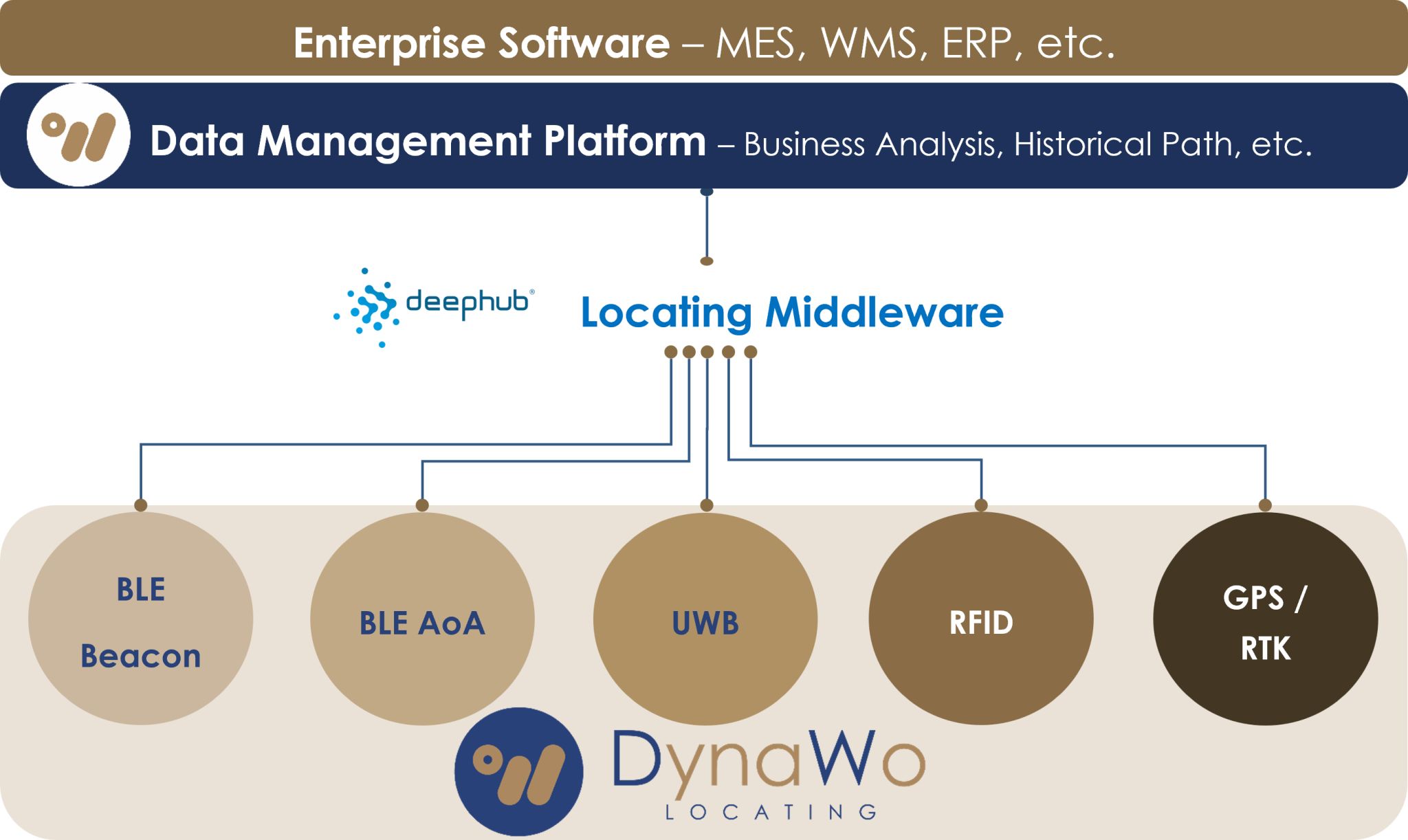Location technology today isn’t about choosing the best protocol — it’s about integrating the right ones. At DynaWo, we design hybrid RTLS systems that combine UWB, BLE (AoA and RSSI based), GPS, and LoRaWAN — because no single technology covers every operational layer. True value lies in how well these technologies work together, not in isolation.
The middleware that holds this together is DeepHub® from Flowcate, which allows us to treat multiple positioning signals as one unified logic layer — so every tagged object or person is trackable across the full environment, with real-time context and automation.
A Real Hybrid Flow — How It Actually Works in the Field
Take a logistics warehouse as an example.
- Arrival & Verification — As incoming goods arrive, RFID or QR scans at the dock log them into the system. This initial identification tags the assets virtually — linking each item to a digital ID.
- Transfer to Staging — Forklifts move the pallets to a designated buffer area. Here, BLE AoA monitors cart and personnel movements. If a cart stalls too long or enters the wrong lane, the system triggers a rule-based alert.
- Precision Tracking Inside the Warehouse — For high-value packages or autonomous vehicles, UWB tags take over. With accuracy down to 10–30 cm, managers get precise visibility on motion paths — perfect for task automation or route optimization.
- Outdoor Movements & Long-Range Sensors — Once loaded onto outbound trucks, GPS trackers pick up positioning outdoors, maintaining continuity in fleet visibility. Simultaneously, sensors on the containers report temperature, vibration, or door status as they travel.
All of this is managed through DeepHub®, which doesn’t care whether the input is coming from a UWB, BLE, or GPS — it interprets them under one shared geospatial logic, triggers the same geofences, and pipes everything into one dashboard.
Why It Matters
With hybrid RTLS, the environment becomes spatially aware and operationally responsive — not just tagged. You don’t need to overbuild with high-spec infrastructure in areas that don’t need it. You can deploy precision where it’s critical, and keep things lightweight elsewhere.
And because DeepHub® manages this entire logic stack independently of vendor or protocol, your system stays future-proof and scalable.
At DynaWo, this is how we approach every RTLS project: not with one perfect technology, but with a system that lets all of them do what they do best — together.

